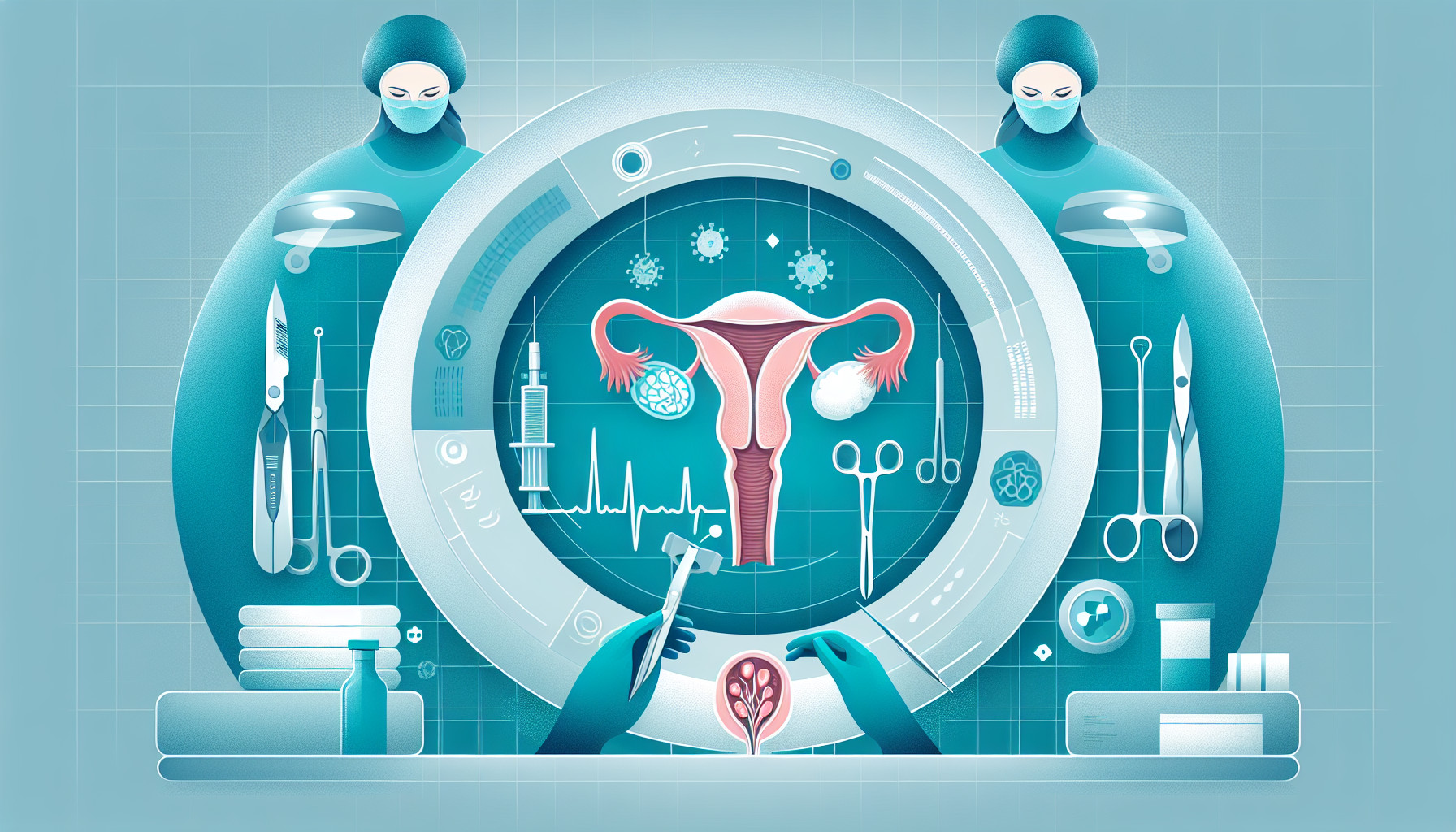Our Summary
This research paper talks about endometriosis, a disease where tissue similar to the lining of the uterus grows in other areas of the body, causing pain and sometimes fertility problems. There are three types of this disease, and one of them, deep infiltrating endometriosis (DIE), is particularly severe. Often, a patient may be suffering from more than one type at the same time.
The treatment for endometriosis can be medical (using medicines) or surgical (involving an operation). Medicines can help manage the symptoms, but they don’t permanently treat the disease. So, many patients need to have surgery. The goal of surgery is to remove all the disease tissue in one go. This can provide long-term relief from pelvic pain and lower the chance of the disease coming back, while also helping to maintain the function of the affected organs. The success of the surgery depends on completely removing the diseased tissue while keeping as much healthy tissue as possible.
The decision to go for surgery instead of medical treatment depends on the patient’s wishes, such as wanting to become pregnant, the level of pain they’re experiencing, and how severe and where their disease is. The paper emphasizes that having a team of experts from different fields working together can lead to better results in treating endometriosis.
FAQs
- What is deep infiltrating endometriosis (DIE) and how is it different from other types of endometriosis?
- How does surgical treatment for endometriosis work and what are its potential benefits?
- What factors influence the decision to opt for surgery over medical treatment for endometriosis?
Doctor’s Tip
One helpful tip a doctor might tell a patient about ovarian cyst removal is to follow all pre-operative instructions provided by the medical team. This may include fasting before the surgery, stopping certain medications, and arranging for someone to drive you home afterwards. Following these instructions can help ensure a successful surgery and smooth recovery. Additionally, it is important to discuss any concerns or questions with your healthcare provider before the procedure.
Suitable For
In the case of ovarian cysts, patients who are typically recommended for ovarian cyst removal are those who have large cysts that are causing symptoms such as pelvic pain, bloating, or pressure. Additionally, patients who have cysts that are at risk of rupturing, causing internal bleeding or infection, may also be recommended for surgery.
Patients who have complex ovarian cysts, meaning they have solid components or are at risk of being cancerous, may also be recommended for surgery to remove the cyst and prevent any potential complications. Women who have recurrent ovarian cysts, meaning they have had multiple cysts that have come back after previous treatment, may also be recommended for surgery to prevent future cysts from forming.
Overall, the decision to recommend ovarian cyst removal surgery is based on the individual patient’s symptoms, the size and type of the cyst, and the potential risks and benefits of surgery versus other treatment options. It is important for patients to discuss their options with their healthcare provider to determine the best course of treatment for their specific situation.
Timeline
- Before ovarian cyst removal:
- Patient experiences symptoms such as pelvic pain, painful periods, painful intercourse, and infertility.
- Patient undergoes diagnostic tests such as pelvic exams, ultrasounds, and MRI scans to confirm the presence of ovarian cysts.
- Patient may try medical treatments such as pain medications or hormonal therapy to manage symptoms.
- Patient discusses treatment options with their healthcare provider and decides to undergo surgery for ovarian cyst removal.
- After ovarian cyst removal:
- Patient undergoes laparoscopic surgery to remove the ovarian cysts.
- Patient may experience some pain and discomfort post-surgery, which can be managed with pain medications.
- Patient is advised to rest and avoid strenuous activities for a certain period of time to allow for proper healing.
- Patient may have follow-up appointments with their healthcare provider to monitor their recovery and address any concerns.
- Patient may experience relief from symptoms such as pelvic pain and improved fertility after the removal of ovarian cysts.
What to Ask Your Doctor
- What are the risks and benefits of ovarian cyst removal surgery?
- What type of ovarian cyst do I have, and how large is it?
- How will the surgery be performed, and what is the recovery process like?
- What are the potential complications of the surgery, and how likely are they to occur?
- Will I be able to preserve my fertility after the surgery?
- Are there any alternative treatments to consider before proceeding with surgery?
- How experienced is the surgeon in performing ovarian cyst removal surgeries?
- What is the success rate of this surgery in treating ovarian cysts?
- Will I need any follow-up treatments or monitoring after the surgery?
- Are there any lifestyle changes or precautions I should take after the surgery to prevent the recurrence of ovarian cysts?
Reference
Authors: D’Alterio MN, Saponara S, D’Ancona G, Russo M, Laganà AS, Sorrentino F, Nappi L, Angioni S. Journal: Minerva Obstet Gynecol. 2021 Jun;73(3):317-332. doi: 10.23736/S2724-606X.21.04737-7. PMID: 34008386
